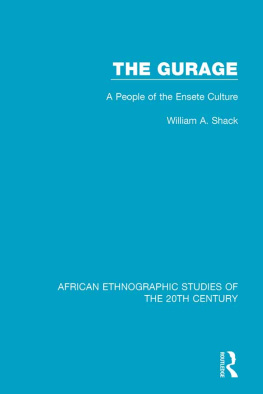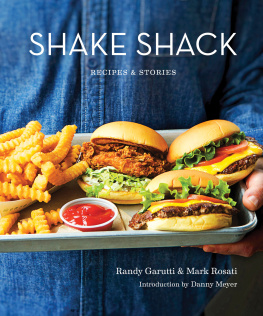First published in 1966 by Oxford University Press for the International African Institute.
This edition first published in 2018
by Routledge
2 Park Square, Milton Park, Abingdon, Oxon OX14 4RN
and by Routledge
711 Third Avenue, New York, NY 10017
Routledge is an imprint of the Taylor & Francis Group, an informa business
1966 International African Institute
All rights reserved. No part of this book may be reprinted or reproduced or utilised in any form or by any electronic, mechanical, or other means, now known or hereafter invented, including photocopying and recording, or in any information storage or retrieval system, without permission in writing from the publishers.
Trademark notice: Product or corporate names may be trademarks or registered trademarks, and are used only for identification and explanation without intent to infringe.
British Library Cataloguing in Publication Data
A catalogue record for this book is available from the British Library
ISBN: 9780815387138 (Set)
ISBN: 9780429488139 (Set) (ebk)
ISBN: 9781138598041 (Volume 59) (hbk)
ISBN: 9780429486647 (Volume 59) (ebk)
Publishers Note
The publisher has gone to great lengths to ensure the quality of this reprint but points out that some imperfections in the original copies may be apparent.
Disclaimer
The publisher has made every effort to trace copyright holders and would welcome correspondence from those they have been unable to trace.
Contents
Oxford University Press, Ely House, London W.1
GLASGOW NEW YORK TORONTO MELBOURNE WELLINGTON
CAPE TOWN SALISBURY IBADAN NAIROBI LUSAKA ADDIS ABABA
BOMBAY CALCUTTA MADRAS KARACHI LAHORE DACCA
KUALA LUMPUR SINGAPORE HONG KONG TOKYO
International African Institute 1966
First published 1966
Reprinted 1969
Printed in Great Britain by
Hazell Watson & Viney Ltd., Aylesbury, Bucks
Illustrations
PLATES
A Gurage elder
Fuga hunters stalking game
A G, tanner, scraping hair from a cow skin. The tool resembles a carpenters plane; the blade is obsidian
A view of a Gurage village
A view of the market at Agnna
Transplanting mtky, the third planting stage of st
Women decorticating st at harvest
Young Gurage girls carrying water
A Gurage woman in typical head-dress
Mwyt Chiefs leading the girls in ceremonial dancing. Some
Mwyt are carrying the
lum
-stick
A Gurage bride astride her husbands mule being led by the mze. The dress and umbrella are the main items of bridewealth
Y oka council meeting being presided over by ehot seated under the sacred zgba-tree. Seated second on the right, Chief Tsm Amrga
The sacred forest and ritual shrine of the deity Dmwamwit
FIGURES
Spatial arrangement of a Gurage settlement
Gurage nomenclature of st
Calendar of agriculture
Primary and secondary crop distribution
st cycle of cultivation
The market cycle in Gurageland
Sketch plan of a Gurage market
Gurage kinship terminology
The interrelationship of component lineages of the Mogmn clan
Skeleton genealogy of the Mogmn clan
Succession in clan chieftainship
Structural relations of Y oka
Succession and marriage of Damo and Yogpha
The political and ritual structure of Gurage
The polarity of the sexes in cult rituals
Lineage segmentation of the Ynkwamt clan
TABLES
Dialect and religious grouping of Gurage tribes
Administrative Divisions of Gurageland Awraja
Size of land holdings among three Plateau tribes
Items of market transactions: 1886
Items of market transactions: 19579
Numbers of men away from village in labour migration
Gurage terms of relationship
Distribution of children per homestead and the relationship to marriage stability
Primary segments of four Gurage tribal divisions
MAPS
Ensete culture area: South-West Ethiopia
Tribal Provinces in South-West Ethiopia: 1935
Patterns of land use in Gurageland
Gurage Awraja: Shoa Province
T HIS study is based on field research among the Gurage of Shoa Province in South-West Ethiopia, carried out intermittently between September 1957 and July 1959. The research was made possible by employment with the Imperial Ethiopian Ministry of Education and the Administrative Staff of Tafari Makonnen Secondary School. In all, extended stays of six to eight weeks on four occasions in two Gurage villages and several shorter visits provided the only basis for direct observation of Gurage life. Field data were supplemented by extensive interviews with migrant and resident Gurage in Addis Ababa.
The circumstances under which field work was conducted, combining field trips with teaching commitments, were obviously less than ideal. But whatever measure of success I achieved I owe to the co-operation, goodwill, and patience of the Gurage, who allowed me to impose my anthropological interests upon them. Hence my deepest gratitude of all is to the Gurage people whose hospitality and show of kindness have made an unforgettable impression. Balabbatt Tsm Amrga, Chief of the Chaha Gurage, and Abba Franois Markos, Head of the Catholic Mission in Endeber, stand foremost among those who afforded me many pleasurable moments and through them my investigations were greatly facilitated. They introduced me to Gurage society.
I am also indebted to several of my teachers who helped to shape my interests in social anthropology. In this regard, I owe more than a word of thanks to Professor Fred Eggan whose teaching, guidance, and encouragement prepared me as a graduate student to conduct field research. At the London School of Economics, Ford Foundation Fellowships in 195960 and 19601 provided me with financial support to prepare an earlier version of this study which was presented as a doctoral thesis. And to the Foundation, I am indeed thankful. Professor I. Schapera supervised my writing and he was a whetstone against which I could sharpen my tools of social anthropological inquiry; I am profoundly indebted to him. I lack sufficient literary skills adequately to describe the intellectual stimulus received in the Graduate Seminars conducted by Professor Raymond Firth, where much of the material in this study was first examined under his theoretical guidance. This has made an indelible imprint upon my thinking.


 ykr.
ykr. -stick
-stick








